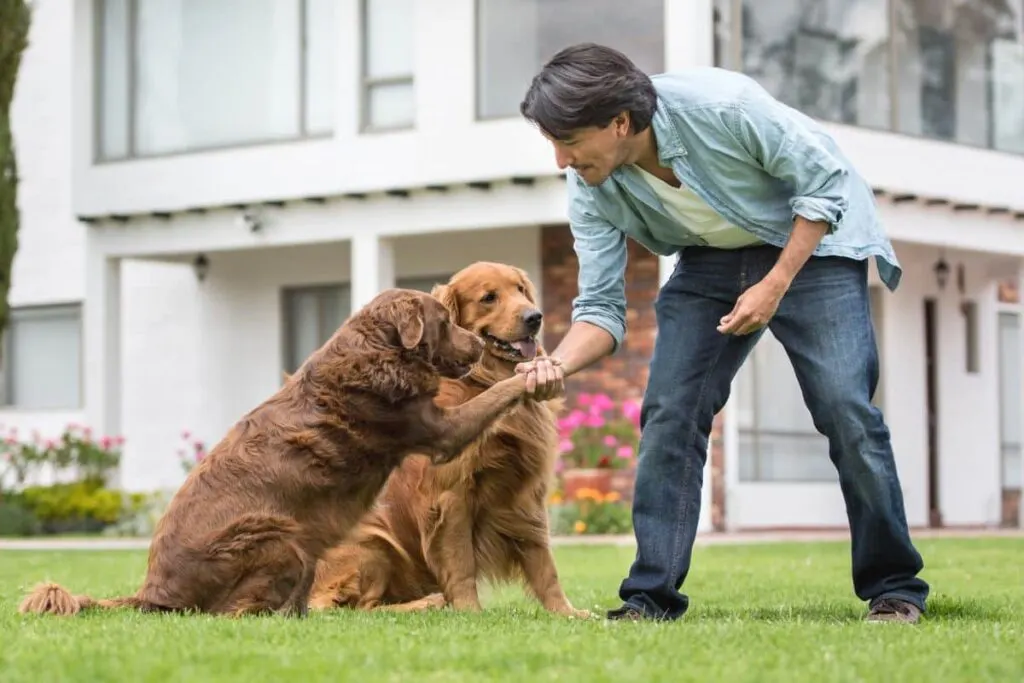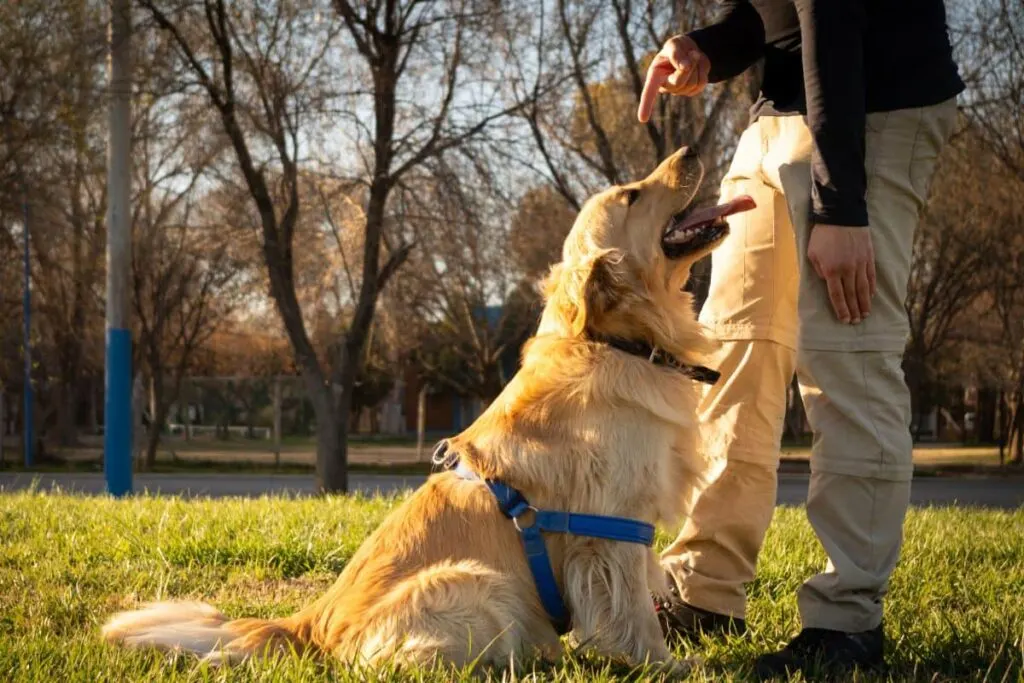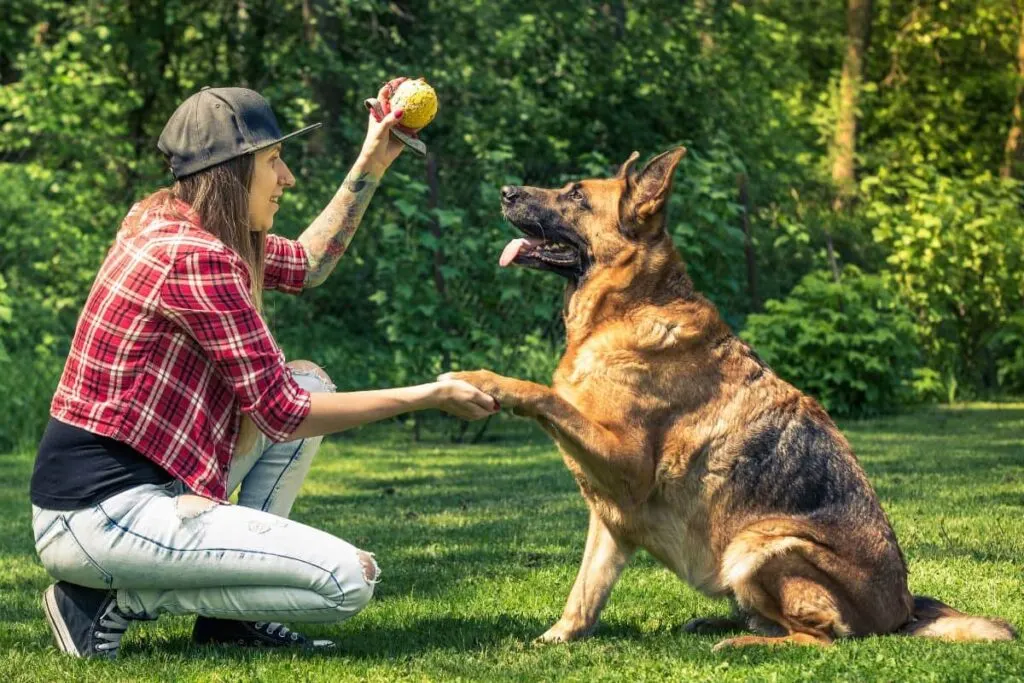People place older dogs on the back burner because of the saying, “You can’t teach an old dog new tricks,” especially when being a service dog is the focus.
Although this isn’t entirely accurate, there are some factors to consider when training older dogs, such as health, temperament, and age.
Older dogs can still be trained as service dogs. Even though they might learn slower than younger dogs or need to unlearn some habits, distractions might be easier for them to overcome. Plus, they may know and understand basic commands already.
This article will discuss the recommended age of service dogs, the requirements for a service dog, and what is needed to train an older dog to be a service dog.
If you want your older dog to be a service dog, continue reading.

Click Here to Jump to a Section
How Old Should a Service Dog Be?
Typically there is no concrete age for a dog to become a service dog.
However, to be classified as an older dog, larger breed dogs typically have to be six to eight years.
But with smaller breeds, the age goes up to 12 years.
In some industries, dogs as young as 4 months are performing the duties of a service dog, but two years old is the industry standard, as this is considered the adolescent stage.
Service dogs typically don’t surpass the age of 10 or 11 years old, as most dogs retire at this age.
However, there are exceptions, as some dogs can continue beyond this age until their owner decides otherwise.
Requirements To Be a Service Dog
The requirements for each dog will differ depending on which service the dog will be handling, so specific training in the disability the dog will deal with is a requirement for each service dog.
However, there are basic requirements that every dog should attain before becoming a service dog.
Service Dogs Need To Stay Calm and Friendly
Being calm is a mainstay for every service dog.
Service dogs need to be friendly towards humans, and other dogs that are unknown to them, as this is an essential component as several circumstances will confront them.
These circumstances include but are not limited to:
- Crowds
- Traffic
- Sirens
- Yelling
- Falling Objects
- Other Dogs

The service dog should not react aggressively to any of the above situations.
However, at the same time, a service dog should be trained not to get distracted by petting and similar activities as that can cause problems for their humans.
I have an article detailing how and why some dogs don’t like petting from strangers. You can check it out for more information. [Why Does Your Dog Not Let Strangers Pet Them?]
Service Dogs Should Be Spayed Or Neutered
A service dog must be spayed or neutered because altering the reproductive organ of the dog typically enhances its behavior.
This way, other dogs will not distract them while they are training or as they are on duty. Male dogs won’t stray, and females won’t require special attention for their hygiene.
I have an article discussing the right age for neutering dogs. You can check it out for more information.
A Service Dog Should Have a Long Attention Span
The attention span of a service dog must be adequate for them to focus during training.
Inadequacy in their attention span could lead to the dog’s inability to retain the instructions taught, which might result in the service dog not focusing while on duty.
Service Dogs Should Be Healthy
Service dogs should be physically fit, depending on the breed, and capable of stabilizing an adult or pulling a wheelchair.
As a dog ages, several health conditions impact its strength and ability to respond to instructions.
Osteoarthritis and diabetes are two health conditions that might affect the dog’s physical and mental abilities.
Other diseases that older dogs are more susceptible to include:
- Cancer
- Heart Disease
- Liver Disease
- Kidney Disease
- Obesity
They Might Have Limitations To Doing Their Job
Smaller breed dogs typically have fewer health issues than larger breeds.
The dog’s health overlaps with its limitations, and as health conditions deteriorate, it can propagate or propel limitations.
For instance, arthritis would limit the dog’s ability to stand firm while stabilizing an adult.
Alternatively, you can view the limitations of the service dog in terms of the size or breed of the dog.
Small breed dogs are not suited for physical work, such as pulling a wheelchair, while larger breed dogs are not suited for guiding their handlers through tight spaces.
Other limitations, such as impaired vision or difficulty hearing, can also hinder service dogs from obeying their handler.
Training Needed for Older Service Dogs
Training older dogs requires compromise and patience, especially for a service dog.

This has benefits, such as fewer distractions and the possibility of known basic commands, but there are some habits that the dog might need to unlearn.
The entrenched habits could be because of a lack of training as puppies or incorrect methods utilized previously.
Typical habits that might need unlearning are:
- Chewing
- Begging
- Jumping
- Leash Pulling
- Excessive Barking
In most of the above situations, dogs continue with these behaviors because it has been rewarding for them.
Dogs are creatures of habit, and to unlearn these behaviors, trainers have to offer consistent, positive reinforcements and appropriate but timely rewards.
The objective is to ensure it is more rewarding to obey than to repeat the bad habit.
Tactics To Employ
Below are a few tactics used to re-train or unlearn the habits these older dogs have picked up along the way:
- Chew Toys
- Praise
- Treats
- “Stay” and “Place” Commands
- Barricades
Each tactic has an application appropriate to a corresponding habit, and it’s the job of the handler or trainer to find which tactic works with the habit the dog displays.
Every dog is different, and what might work with one dog might not with another, which means that in some cases, employing more than one tactic is necessary to curb unwanted behaviors in dogs.
Final Thoughts
Training an older dog as a service dog is possible, and while they may learn at a slower rate, they may also require fewer instructions.
Older dogs are more susceptible to health issues, which can restrict them from performing specific tasks, so take this into consideration before the dog begins its training.
Other things to consider are the disposition or temperament of the dog, its limitations, reproduction status, and attention span or concentration level.
It may take time for them to respond to instructions or undo the bad habits they have developed over years of inadequate training.
